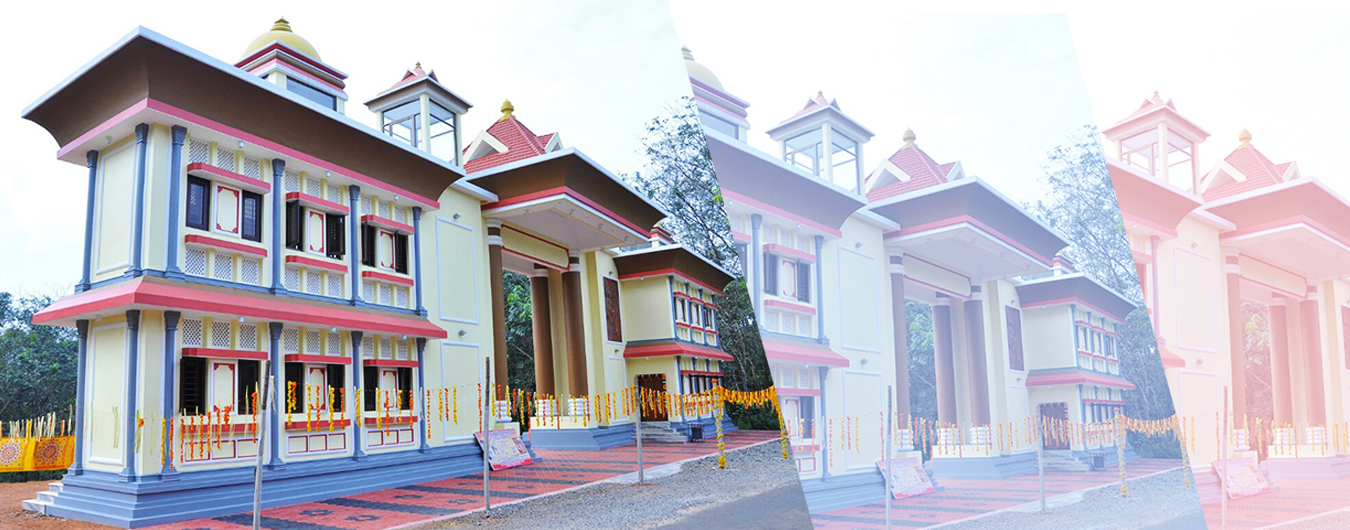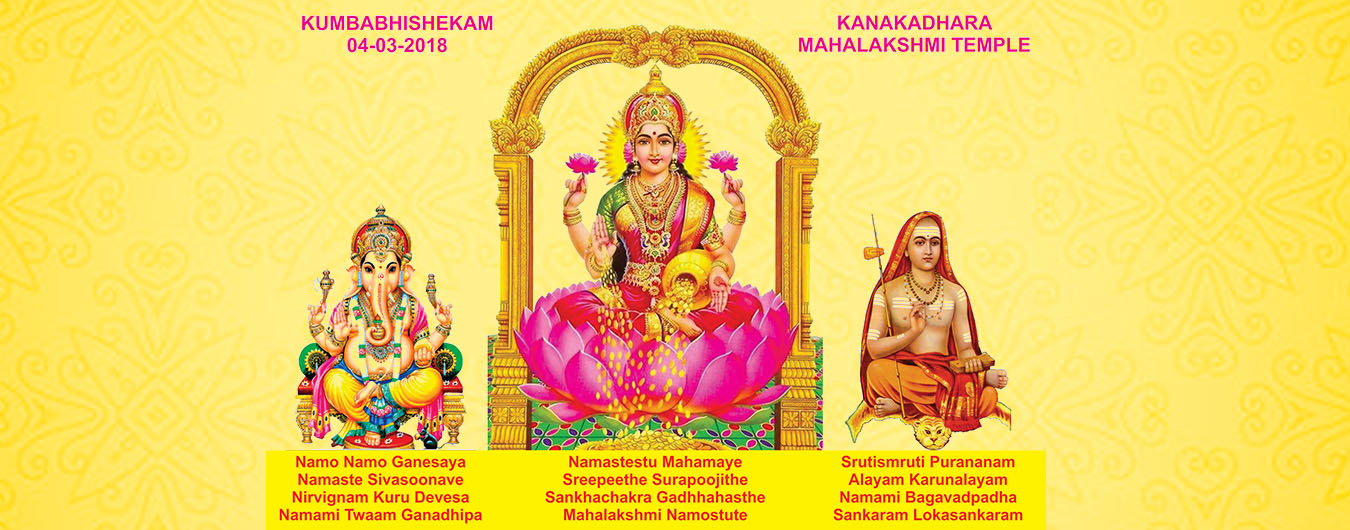Welcome to Kanakadhara Mahalakshmi Temple
KANAKADHARA MAHALAKSHMI TEMPLE stands as a monument of historical importance at the exact place where the Divine manifestation of Mahalakshmi in response to ADI SANKARA’S soulful prayers of Kanakadharastavam (the first HYMN of ADI SANKARA) took place. The event occurred at the place now popularly known as SWARNATHU MANA (also PUNNORKODE MANA) suggesting clearly the presence of Gold in the episode. Swarnathu Mana is in Punnorkode, Pazhamthottam situated 16 KM from Aluva and 23 KM from Kaladi. The Kanakadharastavam, the first hymn spontaneously poured forth from the young compassionate Adi Sankara is an adorable appeal and prayer to Mahalakshmi (Goddess of wealth and prosperity) to direct a glance of benediction on a noble lady who was languishing in abject poverty.
LEGEND: As was the practice in olden days of Gurukulam all pupils in turn have to seek food from householders (Biksha from Grahastas ) and share whatever they receive with the fellow students and Acharya( teacher). It was Sankara’s turn on a Dwadasi day to seek alms. Sankara of 5 years age was going door to door for alms (Biksha) and happened to see a cottage where a lady with a pious countenance was seen.
Sankara addressed the lady “O blessed mother, please give alms.” (Maatha Bavathy Biksham Dehi). The lady was poor, and though was attracted by the splendor and effulgence of Sankara, earnestly desired to give something to Sankara but felt helpless and grieved as she had nothing. Despite knowing very well that she did not possess anything worthy for her guest, the poor lady did not want young Sankara to leave empty handed, and noticing her ordeal and pitiable situation, Sankara stood there calmly. She searched to locate something to be given and saw a few dry gooseberries (Amla) which she had collected for Parana (that which is taken to end a fast) (Previous day being Ekadashi she had not eaten anything and had observed fast (Upavas). She did not even know whether this gooseberry could be given and would be accepted by Sankara. She sought his permission before giving. Sankara was deeply moved by the noble gesture and gracious heart with a charitable attitude of parting with the only thing she had and respectfully received the alms. The entire situation of the lady in distressing poverty triggered the compassionate all inclusive personality of Sankara to soulfully appeal to Goddess of wealth and the resultant hymn was KANAKADHARASTAVAM.
The story continues as Mahalakshmi asserted lack of charity in previous births of the lady as the reason for poverty; but the persuasive Sankara (as is evidently clear from each stanza of the poem) justified the willingness to part with the gooseberry, the only possession, as a sufficient reason deserving grace and blessings. Goddess Mahalakshmi impressed by the earnestness of Sankara’s appeal was so joyous and liberal to create an instant downpour, a continuous shower of Golden Amla fruits. In memory of this episode, the hymn came to be known as Kanakadhara Stotram.



